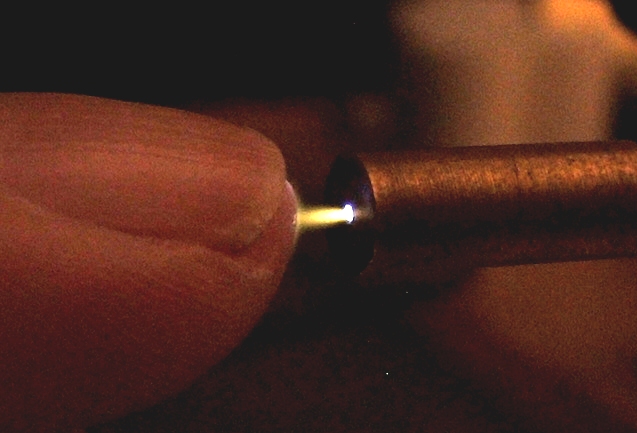Degradation of Microorganisms and Chemical Compounds
Non-thermal plasmas have demonstrated great potential for the solution of many medical and environmental problems. Characterized by low heavy particle temperatures
(i.e. kinetic energies of ionic, atomic and molecular species), but still bringing about interactions which are unique to plasmas (through reactive species, radiation,
energetic electrons etc.), strong responses can be achieved with little or no collateral damage. A prominent example is the sterilization of plastic materials, which
cannot endure high temperatures in an autoclave.
When generated at atmospheric pressure in air and kept 'cold', i.e. close to room-temperature, plasmas also can be used in a similar way for the disinfection of human tissues, such as skin. As a first and foremost physical agent, and, therefore, for an immediate response not depending on biochemical pathways, they are indiscriminate against many pathogens, including antibiotic resistant strains. Beyond high biocidal efficacy, plasma therapies also have been used successfully to promote wound healing (for example to activate platelets), induce apoptosis and facilitate molecular transport into cells (for example for gene delivery). Plasmas are further discussed as promising treatment alternatives for many common skin conditions and diseases, spanning a range from acne vulgaris to skin cancers. The variety and possibilities have led to the emergence of a new field of Plasma Medicine or more general Plasma Biology.
Our research is focusing on possible therapeutic applications of non thermal plasmas. The primary objective is the investigation as a disinfectant for wounds and skin
in general, and as a treatment modality for other skin diseases and conditions. Besides in vitro studies we emphasize experiments with ex vivo and in vivo tissue
models when possible and appropriate in our research. The application driven effort is complemented by a strong thrust striving for an understanding of the interaction
between plasmas and living cells and tissues. The complexity of the plasma, which meets with the complex biological target, entails a manifold of possible interactions
and synergies. Accordingly, we have combined the expertise of biologists, physicists and engineers to study plasma parameters, plasma chemistry and biochemistry.
Since the biological efficacy is most likely due to oxygen radicals and compounds, we are interested in plasmas that are generated with ambient air as operating gas. (Most other research groups are dealing with noble gas carriers instead.) The generation of a stable glow discharge plasma under these conditions at atmospheric pressure is challenging and interesting; although the necessary systems are generally simpler than rf-driven plasmas generated with noble gases, for practice it is more appealing. At the same time, the high contribution of atomic oxygen, hydroxyl, nitric oxides and their secondary reaction products warrants high disinfection rates and instigates various biochemical responses. Energetic electrons, electromagnetic radiation and strong electric fields support these reactions and can trigger different mechanisms.
We have investigated the efficacy of a dc current driven atmospheric pressure air plasma jet against yeast infections. Fungi, such as Candida albicans, are notoriously
difficult to treat. Because of their thick cell wall and their ability to adapt and survive harsh conditions, they are an ideal model system for decontamination studies
encompassing characteristics of bacteria and spores. An exposure to the afterglow of the air plasma, in a distance of 10 mm of the discharge origin, lead to a complete
disinfection of the exposed area of 1 cm x 1 cm within an exposure time of only 90 seconds. The spectroscopic analysis of the plasma confirmed the generation of a large
variety of reactive species, including several nitrogen and oxygen compounds, and also hydroxyl and atomic oxygen species. Considerable concentrations of ozone and
hydrogen peroxide could be identified as main secondary reaction results. The temperature profile of the expelled plasma plume shows a drop to below 45 centigrade at
the treatment distance. Consequently, no thermal damage could be detected in an in vivo experiment. A more detailed analysis, of the reactive agents and species that
are active at the treatment side as well as more quantitative dosing studies are underway.
For more details or information check out our publications or send me an email.
|
 |
Projects Coming soon... (hopefully) |

